Adapting to a gluten-free Mediterranean diet doesn’t mean you have to give up the rich flavors of cheese. In fact, the incorporation of cheese into this diet can enhance the variety and enjoyment of meals while maintaining a focus on health and nutrition. Cheese, a staple in traditional Mediterranean cuisine, can be easily included in a gluten-free version of this diet, enabling individuals who are sensitive to gluten to still enjoy its benefits. The Mediterranean diet is lauded for its balance and emphasis on whole foods, which includes healthy fats, lean proteins, and an abundance of fruits and vegetables.
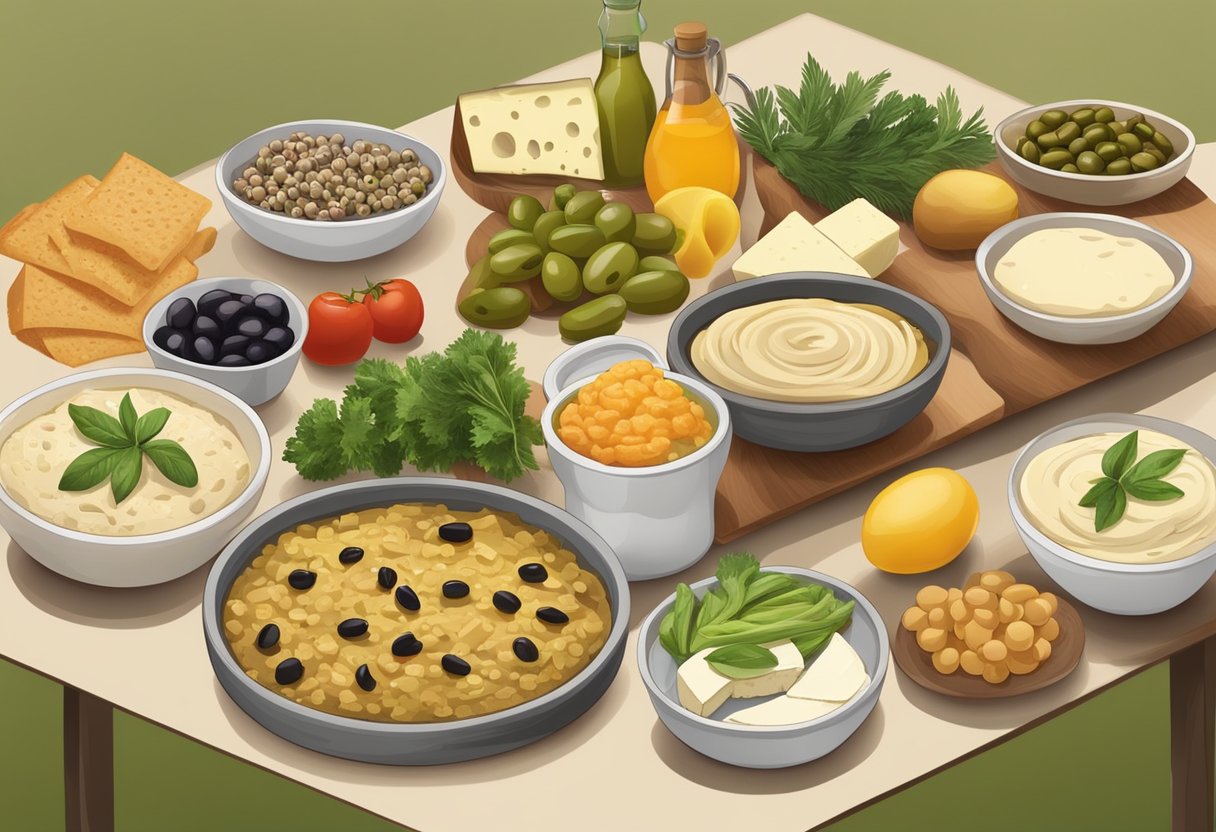
Including cheese in a gluten-free Mediterranean diet requires careful selection to ensure that it does not contain gluten, which is often found in processed foods. The good news is that most natural cheeses are gluten-free. Regular consumption of naturally gluten-free cheeses, such as feta, mozzarella, and Parmesan, can contribute essential nutrients like calcium and protein to the diet. However, it’s important to verify that any cheese used is indeed gluten-free, as some cheeses may contain gluten additives or be cross-contaminated if processed in facilities that also handle gluten-containing products.
Key Takeaways
- Cheese can be included in a gluten-free Mediterranean diet, offering a variety of flavors and nutrients.
- Most natural cheeses are gluten-free and safe for those with gluten sensitivities when selected carefully.
- Including cheese enhances the dietary experience by providing important nutrients and maintaining the richness of Mediterranean cuisine.
Table of Contents
Fundamentals of a Gluten-Free Mediterranean Diet
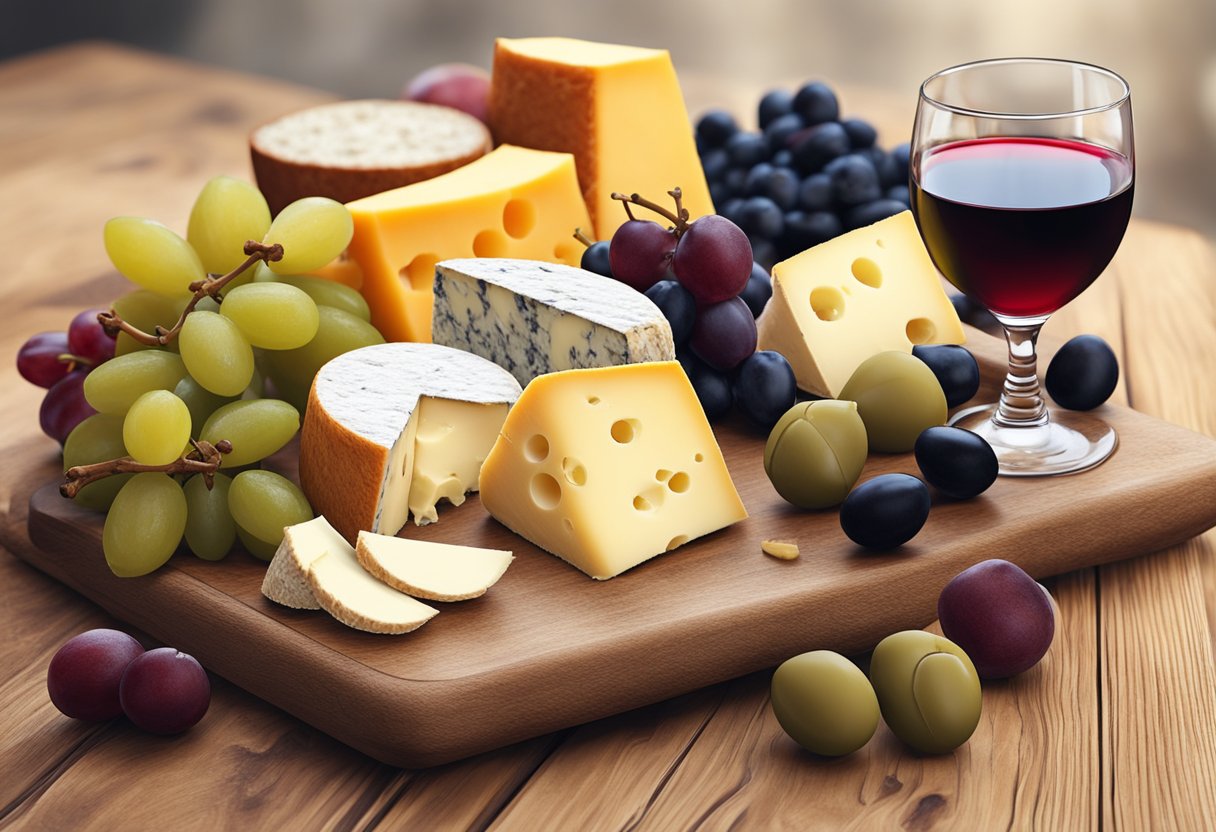
The gluten-free Mediterranean diet merges the principles of traditional Mediterranean eating with the requirements of a gluten-free lifestyle, focusing on nutrition-rich whole foods.
Defining the Gluten-Free Mediterranean Diet
The gluten-free Mediterranean diet is a fusion of two eating philosophies: the heart-healthy Mediterranean diet, which emphasizes the consumption of olive oil, fruits, vegetables, and whole grains, and a strict avoidance of gluten-containing foods—integral for those with celiac disease or gluten sensitivity. Gluten-free substitutes are used for traditional grains like wheat, barley, and rye, ensuring nutrient intake without compromising health.
Health Benefits of the Diet
Adhering to a gluten-free Mediterranean diet contributes to numerous health benefits. It supports heart health by incorporating healthy fats primarily from olive oil and nuts, which can help reduce the risk of heart disease. Moreover, the diet’s high content of fruits and vegetables is associated with a lower risk of cancer due to their antioxidants and fiber content.
Core Ingredients and Substitutes
Core ingredients of a gluten-free Mediterranean diet include:
- Healthy Fats: Primarily from extra virgin olive oil, avocados, and nuts.
- Proteins: Focusing on seafood, poultry, legumes, and dairy products.
- Fruits and Vegetables: Abundant and varied, forming the basis of each meal.
- Gluten-Free Whole Grains: Such as quinoa and certified gluten-free oats, instead of traditional grains.
For those managing celiac disease or gluten sensitivities, it is important to ensure that whole grains are certified gluten-free to avoid cross-contamination.
Essential Foods and Nutrients
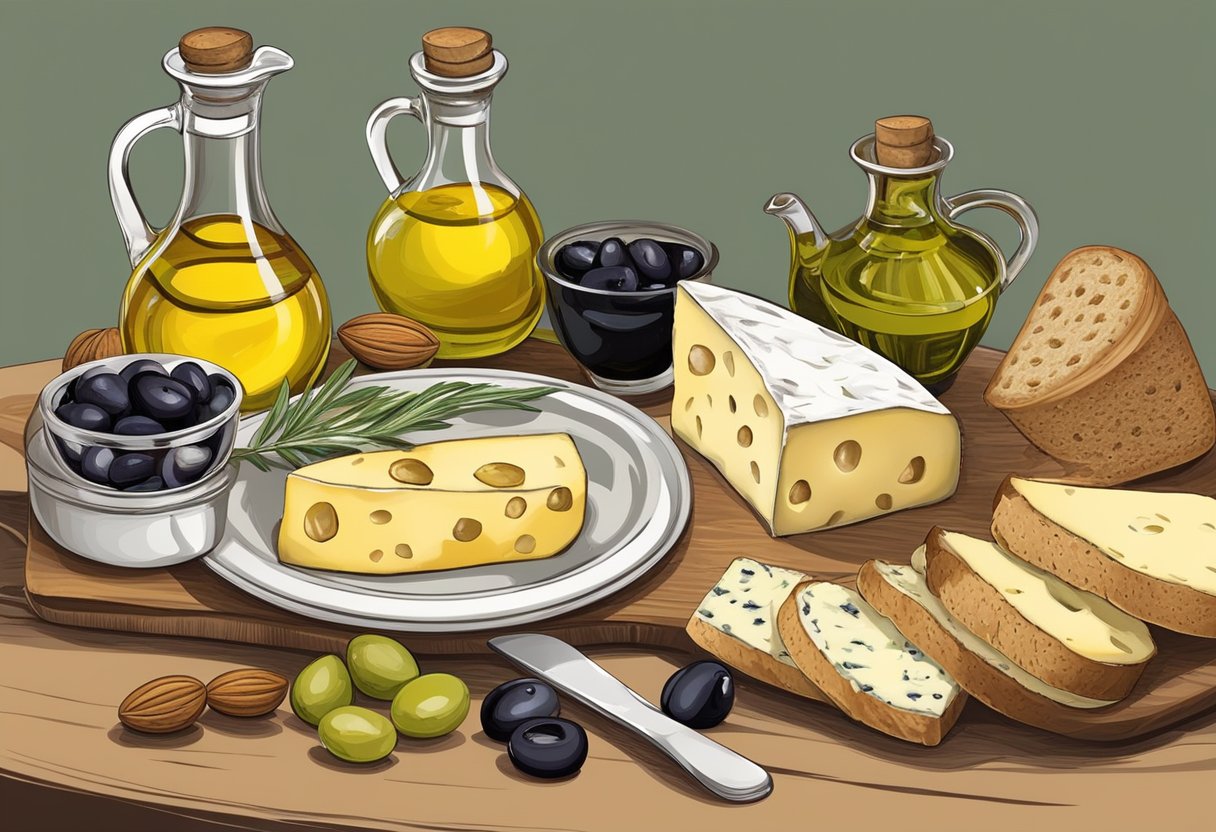
A gluten-free Mediterranean diet prioritizes whole foods rich in nutrients while avoiding gluten-containing grains. Here, proteins, vegetables and fruits, along with healthy fats, play a central role.
Proteins in the Gluten-Free Mediterranean Diet
Proteins are vital for maintaining muscle health and overall well-being within a gluten-free Mediterranean diet. Key sources include fish, which should be consumed at least twice a week for its high omega-3 fatty acids content, and legumes such as lentils, chickpeas, and beans. Poultry and dairy options like Greek yogurt and feta cheese offer additional protein while also complying with gluten-free requirements.
The Role of Vegetables and Fruits
Vegetables and fruits are cornerstones of the Mediterranean diet, offering vitamins, minerals, and fiber. They are consumed in abundance daily. Leafy greens, tomatoes, peppers, and root vegetables can be paired with fruit like berries, apples, and citrus, providing a wide array of antioxidants and phytonutrients important for a healthy diet.
Healthy Fats: Choosing the Right Oils and Nuts
Choosing the right healthy fats is essential for heart health and overall nutrition on a gluten-free Mediterranean diet. Predominantly, olive oil serves as the main source of healthy monounsaturated fats. Raw or roasted nuts and seeds—including almonds, walnuts, and flaxseeds—are encouraged for their healthy fats and as a good source of protein and fiber.
Planning Gluten-Free Mediterranean Meals
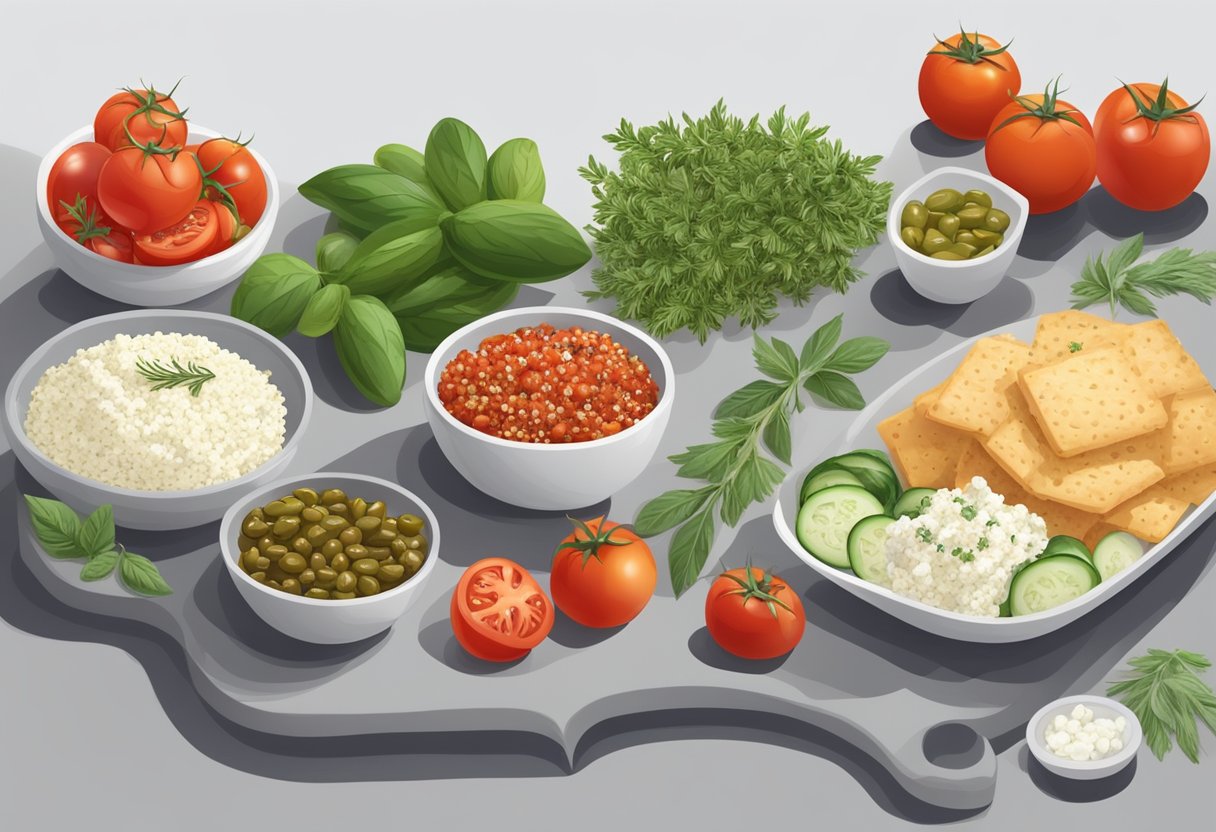
When planning gluten-free Mediterranean meals, one must focus on incorporating wholesome, naturally gluten-free foods such as fruits, vegetables, lean proteins, and gluten-free grains into each meal.
Creating a Balanced Breakfast
For a balanced breakfast on a gluten-free Mediterranean diet, individuals should consider meals rich in protein and fiber. A suggested recipe could feature a quinoa breakfast bowl topped with a mix of fresh fruits and a sprinkle of nuts for an added crunch. Quinoa, a gluten-free grain high in protein, makes a nourishing substitute for traditional cereals.
- Recipe Example:
- Ingredients: 1 cup cooked quinoa, ½ cup sliced strawberries, ¼ cup blueberries, 2 tbsp almonds, a drizzle of honey.
- Instructions: Combine the quinoa with the fruit and nuts, drizzle with honey, and serve.
Lunch Ideas: Light and Nutritious
Lunches on this diet should be light yet nutritious, focusing on vegetables, lean proteins, and gluten-free grains like rice. One might opt for a vibrant salad with mixed greens, cherry tomatoes, sliced cucumbers, and grilled chicken, tossed with a dressing made from olive oil and lemon juice. The addition of brown rice or rice cakes can provide a satisfying, gluten-free base.
- Lunch Ingredients:
- Cherry tomatoes
- Cucumbers
- Grilled chicken
- Brown rice or rice cakes
Dinner Options: Satisfying yet Simple
Dinner should continue the day’s pattern of simplicity and nutrition. Fresh fish, a staple in the Mediterranean diet, can be served with a side of roasted vegetables like zucchini and bell peppers. To enhance the flavors, one might add herbs such as garlic and basil. Offering a gluten-free grain side, such as a tomato and garlic-infused quinoa, can round out the meal perfectly.
- Dinner Recipe Idea:
- Main: Grilled salmon with a squeeze of lemon
- Sides: Roasted vegetables and tomato garlic quinoa
By incorporating these ingredients and meal ideas into their meal plan, those following a gluten-free Mediterranean diet can enjoy a diverse range of nutritious and delicious meals throughout the day.
Avoiding Gluten in Mediterranean Cooking
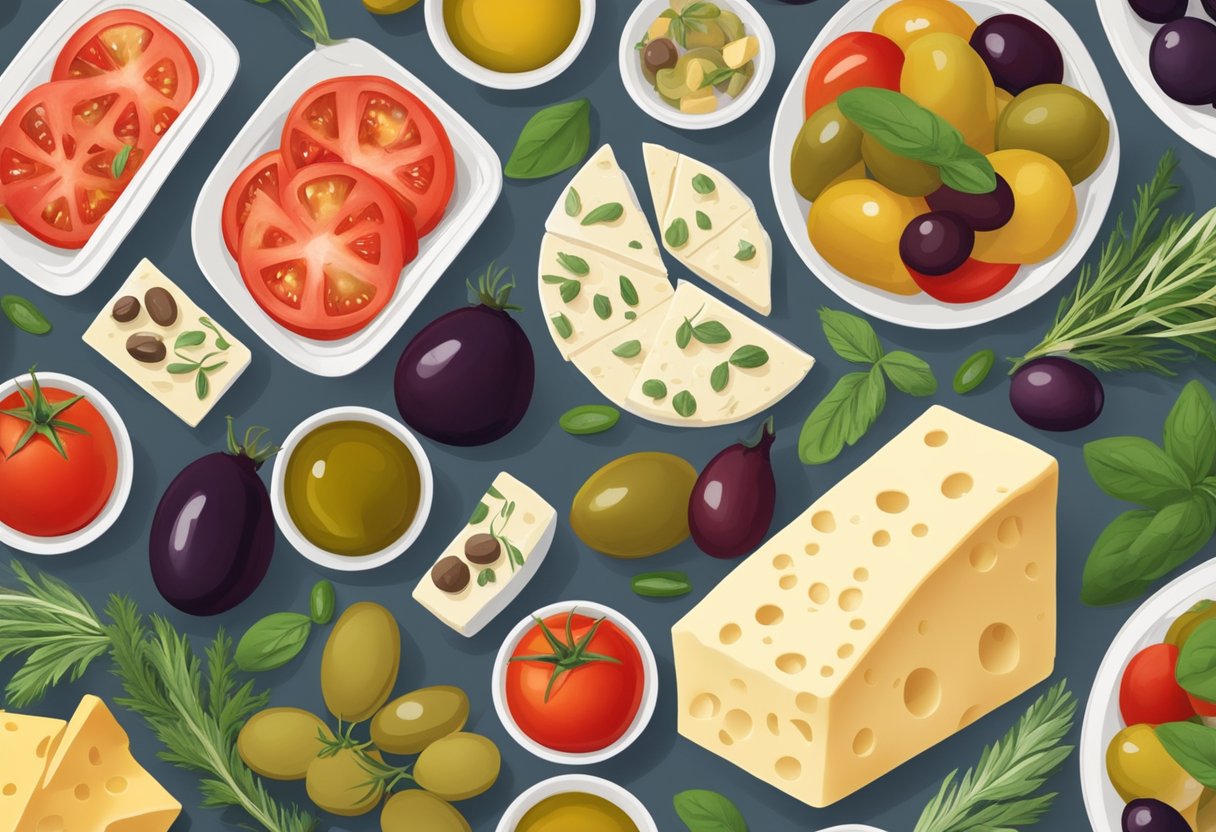
In order to adapt Mediterranean cooking for a gluten-free diet, one must be vigilant about identifying and substituting sources of gluten that are common in this cuisine.
Identifying Hidden Sources of Gluten
Gluten is a protein found in wheat, barley, rye, and their derivatives, posing a risk for individuals with celiac disease due to the inflammation gluten can cause in their small intestine. Mediterranean recipes often incorporate grains like farro, couscous, and certain types of oats that can contain gluten. Therefore, scrutinizing ingredient labels is crucial, as gluten can also lurk in less obvious items such as sauces, dressings, and seasoning mixes.
- Common gluten-containing Mediterranean ingredients:
- Grains: Wheat (e.g., spaghetti, crackers), barley, rye, farro, couscous
- Processed products: Breaded foods, marinades, and certain processed cheeses
Careful examination of food labels and inquiry into food preparation methods is essential to avoid accidental gluten ingestion.
Gluten-Free Alternatives for Common Ingredients
Fortunately, there are numerous gluten-free alternatives that fit within the Mediterranean diet, allowing for an array of traditional dishes to be enjoyed without gluten. Buckwheat, despite its name, is actually gluten-free and can serve as a substitute for couscous or bulgur. Corn-based pasta and polenta are excellent replacements for wheat-based pastas. For oatmeal, it is critical to choose oats that are certified gluten-free, as cross-contamination with gluten grains is common during processing.
- Gluten-free substitutions:
- For couscous: Quinoa, buckwheat, or gluten-free pasta
- For pasta: Corn, rice, or quinoa pasta
- For oatmeal: Certified gluten-free oats
Employing these substitutions not only maintains a diverse and flavorful diet but also ensures safety for those with gluten sensitivities.
Cheese in the Gluten-Free Mediterranean Diet

When adhering to a gluten-free Mediterranean diet, it is essential to select cheese varieties that are gluten-free and to understand how to incorporate them into meals effectively.
Selecting Gluten-Free Cheese Varieties
Most natural cheeses are gluten-free, including feta, commonly found in Mediterranean cuisine. However, some cheeses may contain gluten due to additives or cross-contamination. To ensure a cheese is gluten-free, individuals should look for certifications or clearly labeled packaging. Cheeses to enjoy include:
- Feta cheese: Traditionally made from sheep’s milk or a mixture of sheep and goat’s milk.
- Mozzarella: Often used in Mediterranean cooking, especially in Italian dishes.
- Parmesan: Aged hard cheese that is typically safe for a gluten-free diet.
It is advised that people read ingredient labels and consult with manufacturers if there is any doubt about a cheese product’s gluten status.
Incorporating Cheese into Meals and Recipes
Incorporating cheese into a gluten-free Mediterranean diet can add flavor and richness to dishes while providing valuable nutrients like calcium. Here are a few ways to include cheese:
- Salads: Crumble feta cheese over salads for a tangy addition.
- Grilled Vegetables: Sprinkle Parmesan on grilled zucchini or eggplant.
- Stuffed Peppers: Fill bell peppers with a mixture of rice, herbs, and mozzarella for a satisfying meal.
Additionally, Greek yogurt, another dairy product inherent to the Mediterranean diet, can be used as a healthier substitute for cream or mayonnaise in recipes. It is also usually gluten-free, but checking the label for confirmation is always good practice.
Adapting Classic Mediterranean Recipes

Adapting traditional Mediterranean recipes to suit a gluten-free diet requires careful ingredient swaps and an understanding of how these changes can affect the final dish. Here we explore tailored recipe modifications and various cultural dishes within the Mediterranean palette that cater to gluten-free needs.
Gluten-Free Recipe Modifications
To make classic Mediterranean recipes gluten-free, chefs replace wheat-based ingredients with gluten-free alternatives. For instance, traditional pasta dishes can be made using pasta from rice, corn, or quinoa. Couscous, a staple grain in Mediterranean cuisine, often contains gluten and can be substituted with rice or gluten-free grain alternatives like millet.
The use of various naturally gluten-free flours, such as almond or chickpea flour, is essential for recreating iconic bread and pastry recipes. When baking, it’s important to adjust ratios and add binders like xanthan gum to mimic the texture that gluten provides.
- Common Ingredient Swaps:
- Wheat pasta → Rice, corn, or quinoa pasta
- Wheat flour → Almond, chickpea, or rice flour
- Couscous → Millet or quinoa
- Bread → Gluten-free bread options
- Soy sauce (contains wheat) → Tamari or coconut aminos
Cultural Variations and Gluten-Free Options
Mediterranean cuisine varies greatly across different regions, offering a range of dishes that can be modified for a gluten-free diet. Greek Salads, for example, already fit the gluten-free criteria, whereas Spanakopita can be adapted using gluten-free phyllo dough.
In Italian cooking, dishes like risotto and polenta are inherently gluten-free and maintain the essence of Mediterranean flavors without modification. Other regional staples, such as cheeses and olives, are also gluten-free, however, it’s essential to verify that no cross-contamination has occurred during processing for those with high sensitivities.
When navigating through Mediterranean cooking, it’s advantageous to incorporate naturally gluten-free ingredients central to the diet, like legumes, fresh fruits, vegetables, nuts, seeds, and an emphasis on high-quality olive oils and seafood. This approach not only ensures a vast array of gluten-free options but also aligns with the diet’s healthful foundation.
Lifestyle Considerations

When individuals choose to follow a gluten-free Mediterranean diet, they must assess how it aligns with their routine and understand the broader implications for their wellbeing.
Incorporating the Diet into Daily Life
The gluten-free Mediterranean diet emphasizes the consumption of fruits, vegetables, nuts, seeds, legumes, and lean proteins, while avoiding gluten-containing grains. Individuals can make this transition smoother by planning meals in advance, using a Mediterranean diet meal plan, and ensuring that their pantries and refrigerators are stocked with gluten-free and Mediterranean-friendly ingredients. Adopting this diet requires meticulous label reading and might involve learning new cooking techniques that champion the use of olive oil, herbs, and spices over gluten-containing thickeners and sauces.
Benefits Beyond Physical Health
The benefits of adhering to a gluten-free Mediterranean diet extend beyond physical health. It encourages communal eating and sharing of meals, which can improve social bonds and support a more balanced lifestyle. Furthermore, the diet’s variety and flexibility can reduce the stress often associated with strict dietary restrictions, offering a healthy approach to eating that can be adjusted according to individual preferences and cultural traditions. Engaging in this way of eating promotes a holistic sense of health that is rooted in both nourishment and life satisfaction.
Supplements and Additional Resources

In the context of a gluten-free Mediterranean diet, individuals may need to supplement certain nutrients that are harder to obtain, especially when dietary restrictions are in place. It is essential to know what supplements to consider and when to consult a professional for guidance.
When to Consider Supplements
When adhering to a gluten-free Mediterranean diet, supplements may become necessary if there are specific nutrients that are not adequately provided through diet alone. For example, whole grains included in a typical Mediterranean diet may be limited on a gluten-free version, which can affect the intake of B vitamins. Here, one might consider supplementing with B12, Thiamin, Riboflavin, or Niacin. Additionally, individuals should ensure they are receiving enough calcium and vitamin D, nutrients that are commonly seen in dairy products but may be consumed in lower quantities due to preferences or intolerances.
- Gluten-Free Substitute Sources and Nutrients:
- Calcium: Fortified non-dairy milks, leafy greens, almonds
- Vitamin D: Sunlight, fortified foods, supplements
- B Vitamins: Meat, eggs, dairy (or substitutes), specific gluten-free fortified cereals
- Iron: Red meat, lentils, spinach
- Fiber: Fruits, vegetables, gluten-free whole grains like quinoa and brown rice
Consulting with a Registered Dietitian
Consultation with a registered dietitian is a prudent step for individuals managing a gluten-free Mediterranean diet, particularly because the dietitian can offer personalized advice on nutrition and supplements. A dietitian can conduct a thorough dietary assessment to pinpoint any nutrient gaps and advise on the best gluten-free sources to fulfill dietary needs. They can also help in crafting meal plans that align with the Mediterranean diet ethos while ensuring that the gluten-free requirements are met. This professional guidance is invaluable for maintaining a balanced diet and optimizing health outcomes.
- Nutrient Monitoring and Dietitian Services:
- Assessment of current nutritional intake
- Personalized supplement recommendations
- Meal planning and dietary adjustments
- Monitoring for potential nutrient deficiencies
In sum, while the gluten-free Mediterranean diet is rich in many nutrients, taking certain supplements may be beneficial. Consulting with a dietitian ensures a balanced approach to meet all nutritional needs.
Frequently Asked Questions
Understanding how cheese fits into a gluten-free Mediterranean diet is crucial for those with dietary restrictions like celiac disease or gluten sensitivity.
What types of cheese are compatible with a gluten-free Mediterranean diet?
Most cheese, including traditional Mediterranean options such as feta, halloumi, and manchego, are naturally gluten-free. It’s important to check for cross-contamination if the cheese is processed or packaged.
Are there specific gluten-free substitutions recommended in Mediterranean diet cookbooks?
Mediterranean diet cookbooks often suggest gluten-free grains like quinoa, rice, and corn in place of wheat-based products to maintain dietary needs without sacrificing flavor or nutrition.
How can I construct a gluten-free Mediterranean diet meal plan?
A gluten-free Mediterranean diet meal plan typically includes plenty of fruits, vegetables, nuts, seeds, and gluten-free grains, as well as lean proteins from fish and poultry.
What items should be included in a gluten-free Mediterranean diet shopping list?
A shopping list for a gluten-free Mediterranean diet would include fresh produce, lean proteins, healthy fats such as olive oil, and gluten-free starches like potatoes and rice.
Which dairy products are considered suitable for a traditional Mediterranean diet?
Traditional dairy products suitable for a Mediterranean diet include Greek yogurt, ricotta cheese, and feta, which can enhance meals with calcium and protein while also being gluten-free.
Are there any vegan options for a gluten-free Mediterranean diet?
Vegan options abound in a gluten-free Mediterranean diet, such as plant-based cheeses made from almonds or cashews, legumes, tofu, and a wide variety of fruits and vegetables.



